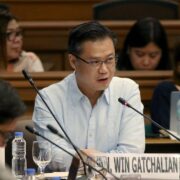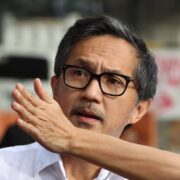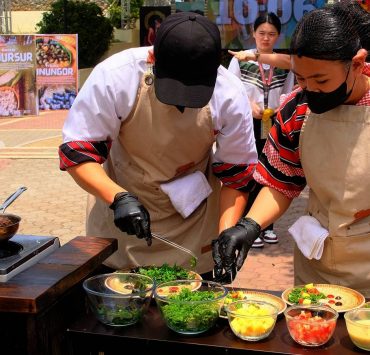Quezon governor stops quarrying on Mt. Banahaw

LUCENA CITY—Quezon Gov. Angelina Tan has ordered an end to all quarry operations on the slope of Mount Banahaw in Sariaya town.
In a recorded video message posted on her Facebook page on Friday night, Tan said she was “ordering the cessation of all quarry operations” in the town.Tan tasked the Provincial Mining and Regulatory Board (PMRB) and the Provincial Government Environment and Natural Resources Office to ensure that no illegal quarry operations are conducted in any part of the province.
Tan’s order came after Sariaya Mayor Marcelo Gayeta initiated a signature campaign on Thursday to stop rock quarrying operations in the municipality.“If we love Sariaya, let us conduct a petition. Let us unite to stop the quarry operation which is feared by our fellow citizens,” Gayeta said in a separate video message that he posted on his Facebook page on Thursday night.
He said logbooks will be distributed in the town’s 43 barangays where antiquarry residents can sign with their names. The logbooks will be gathered after 10 days, Gayeta said.
“At least one-half of the Sariaya population should sign it for stronger opposition,” he said, adding that he would personally deliver the petition to the national and provincial governments.
The town has a population of 161,868 people as of the 2020 census.
Unnecessary
Tan, however, maintained that Gayeta’s signature campaign was unnecessary.
“In my view, he does not need to call upon you (Sariaya residents) and use you, or inconvenience you to do this,” Tan said in her recorded video message.
She added: “As the mayor, I believe and he knows that it is within his power, anytime, upon finding any violations of regulations by operators and quarry permittees, he can cancel or suspend their business permits.”Gayeta commented on Tan’s video message with: “Thank you very much, Gov.”
On April 16, environmentalist group Tanggol Kalikasan (TK) exposed that illegal quarrying was back on the slopes of Banahaw, particularly in the villages of Concepcion Pinagbakuran and Concepcion Bugon in Sariaya.
Jay Lim, TK project officer, found out that the quarry site is inside the 1-kilometer buffer zone of the Mt. Banahaw-San Cristobal Protected Landscape based on the map and global positioning system.
In 2009, Congress passed Republic Act No. 9847, declaring Banahaw and the adjoining Mt. San Cristobal a protected landscape in Quezon and Laguna provinces.
RA 9847 requires the delineation of buffer zones to prevent the destruction of protected areas. Mineral exploration or extraction in buffer zones is strictly prohibited.
However, Magtanggol Barrion, DENR forest ranger assigned to the two mountains, said that the Protected Area Management Board had yet to establish the buffer zone around Banahaw.The quarry operation, like any mining activity in other parts of the province, is under the control and supervision of the PMRB, with the local government performing only ministerial functions as provided under the Local Government Code.‘Moratorium’Rommel Sarmiento, PMRB vice chair, said 27 quarry operators were given permits by their office to conduct rock mining in Sariaya, including the seven that were mining inside the proposed buffer zone.
“I’ve already notified them (legal operators) by phone about the governor’s order. They will come to my office on Monday for a meeting,” Sarmiento said in a phone interview on Saturday.
He said the quarry operators were surprised with the order. But Sarmiento emphasized that Tan’s order was “just a moratorium.”
“During the moratorium, her order for us is to conduct a comprehensive study, inspection and assessment on every quarry operator if they are following the rules and regulations,” he said.
He said that quarry operations in Sariaya had been an essential component of the private and public infrastructure projects not only in Quezon province but also in different parts of the Calabarzon (Cavite, Laguna, Batangas, Rizal, Quezon) region and Metro Manila.
The local government has been limiting quarry operations to the riverbed as part of its flood control program.
But illegal quarry operators buy from owners some low-yielding farms in the area, particularly coconut plantations, to turn them into quarry sites.
“The number of illegal quarry operators in Sariaya outnumbers the legal operators,” revealed Sarmiento, citing reports from concerned residents.
The unlawful mining activities often turned former coconut plantations into a vast empty river of boulders of varying sizes.
The man-made channels pose danger in case of flash floods from Banahaw and after days of heavy rains. INQ

















